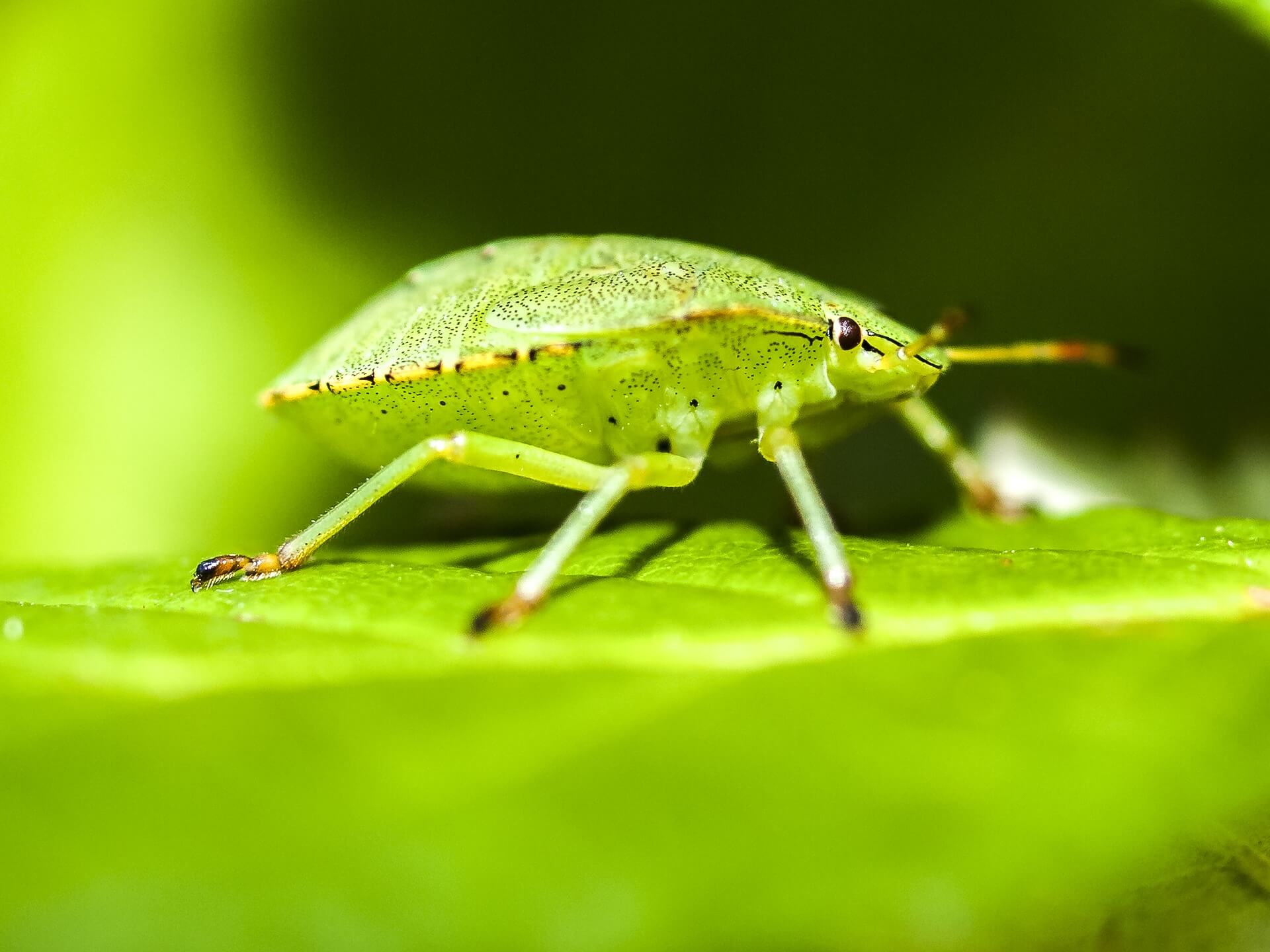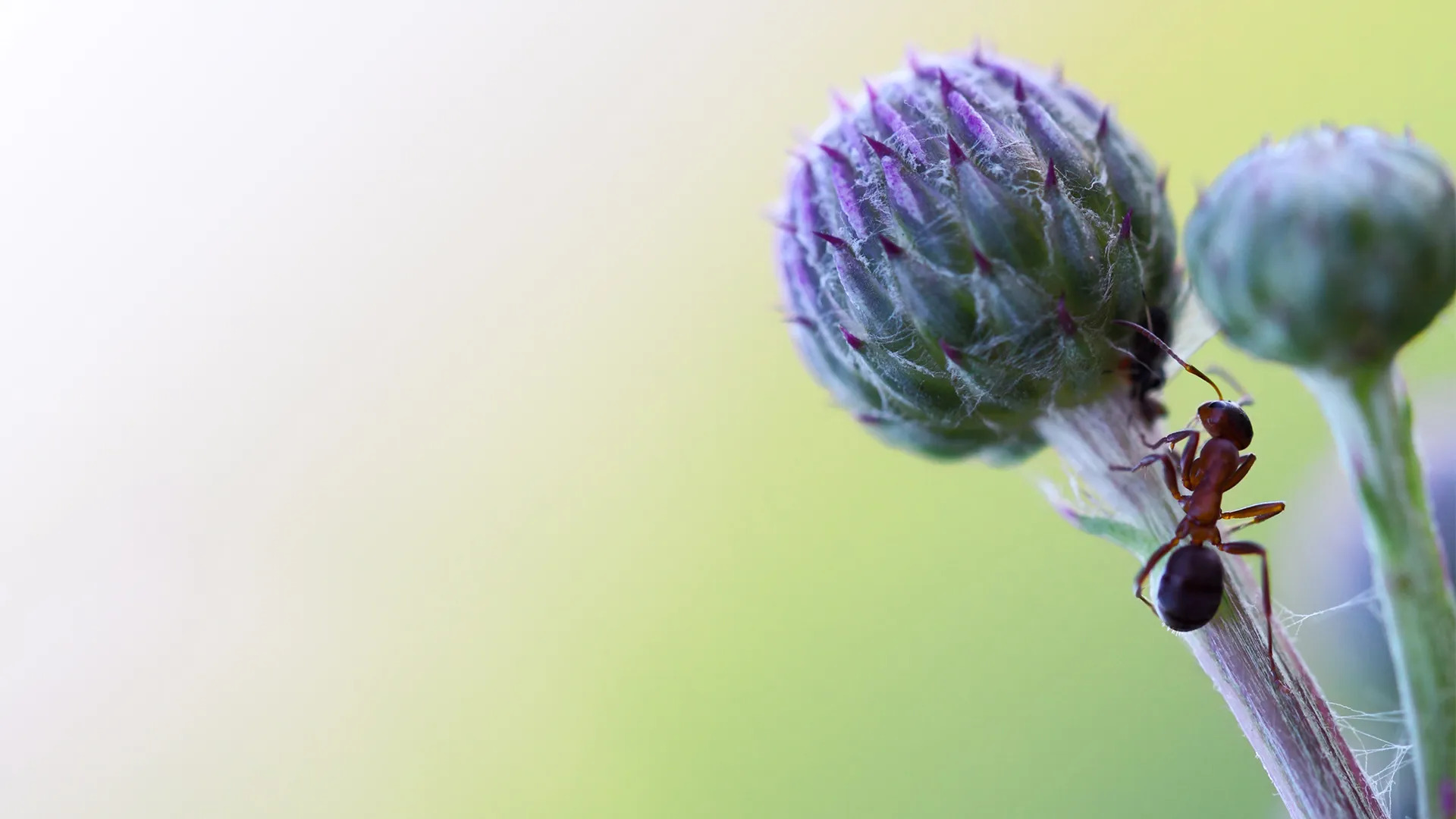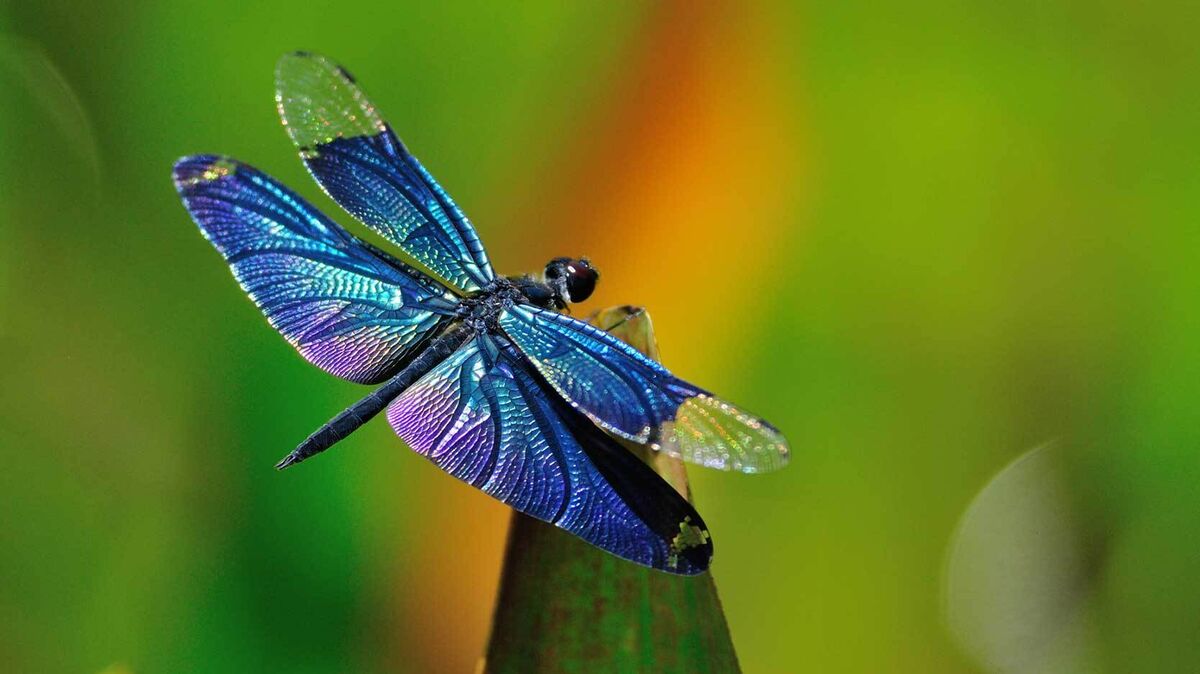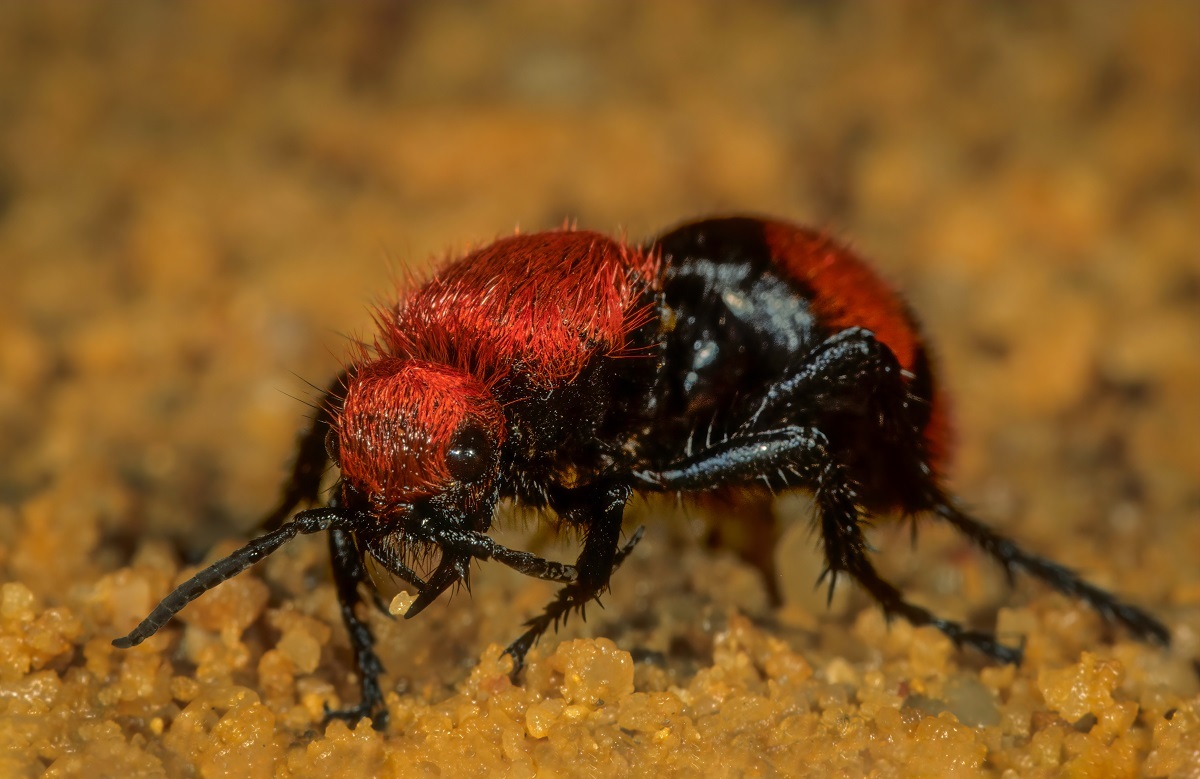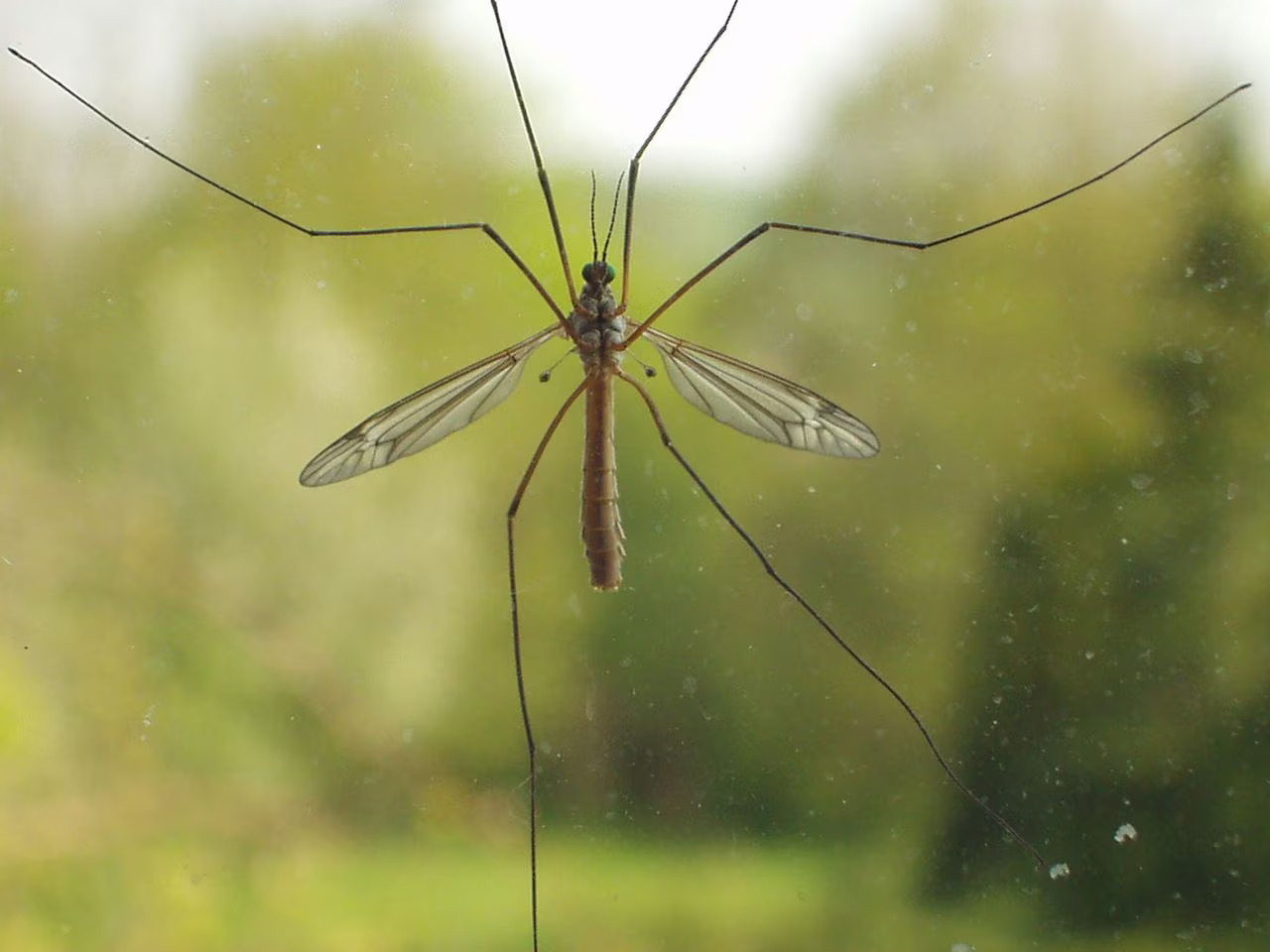Home>Gardening News and Trends>Latest News>What Is The Most Likely Outcome Of Increased Oxygen Concentration On Insects?


Latest News
What Is The Most Likely Outcome Of Increased Oxygen Concentration On Insects?
Published: December 8, 2023
Discover the latest news on the impact of increased oxygen concentration on insects. Explore the potential outcomes and implications for these fascinating creatures.
(Many of the links in this article redirect to a specific reviewed product. Your purchase of these products through affiliate links helps to generate commission for Chicagolandgardening.com, at no extra cost. Learn more)
Table of Contents
Introduction
Insects are an essential part of our ecosystem, playing a crucial role in pollination, decomposition, and nutrient cycling. As oxygen is a vital component for all organisms, it is natural to wonder how changes in its concentration could affect these small but mighty creatures.
With the increasing concerns about environmental changes, including oxygen levels in the atmosphere, scientists have been studying the potential effects of elevated oxygen concentrations on insects. While most insects have evolved to thrive under the current oxygen levels, it is important to understand how they may respond and adapt if the oxygen levels were to change.
Before we delve into the possible outcomes of increased oxygen concentration, it is important to note that this article aims to provide a general overview and should not be considered an exhaustive analysis. The effects of oxygen concentration can vary depending on the specific insect species, their physiology, and their ecological niche.
That being said, let’s explore the potential consequences of increased oxygen concentration on insects, considering various aspects such as metabolic rate, respiratory system, size, flight performance, reproduction, development, and their overall behavior and ecology.
Effects of Increased Oxygen Concentration on Insects
Increased oxygen concentration can have significant impacts on various physiological and ecological aspects of insects. Let’s explore some of the potential effects:
-
Metabolic Rate and Growth
Higher oxygen levels can lead to increased metabolism in insects. This boost in metabolic rate can result in faster growth and development. Some studies have shown that larvae in high oxygen environments exhibit accelerated growth rates and reach adulthood at an earlier stage compared to those in normal oxygen conditions.
-
Respiratory System
Insects have a highly efficient respiratory system consisting of tiny tubes called tracheae. Elevated oxygen concentrations can influence the oxygen uptake and release processes in their tracheal systems. While higher oxygen levels can enhance oxygen transport and availability, excessive oxygen can also lead to oxidative stress in insects, potentially damaging their tissues.
-
Size and Body Mass
Increased oxygen levels may influence the size and body mass of insects. Some research suggests that certain insects may grow larger in high oxygen environments, possibly due to the availability of more energy for growth and development. However, this effect is not universal, as different insect species may respond differently to changes in oxygen concentration.
-
Flight Performance
Oxygen is vital for insects’ flight muscles, which require a constant supply of oxygen to function efficiently. Higher oxygen levels can potentially enhance flight performance, allowing insects to fly faster and for longer durations. However, excessive oxygen concentrations may also increase energy expenditure and lead to fatigue, limiting overall flight endurance.
-
Reproduction and Development
Elevated oxygen levels can impact the reproductive processes and development of insects. Some studies suggest that increased oxygen concentration may promote reproductive activity and improve fertility rates in certain insect species. Additionally, higher oxygen levels can accelerate the developmental stages of eggs and larvae, resulting in shortened life cycles.
-
Behavior and Ecology
Changes in oxygen concentration can influence the behavior and ecological interactions of insects. For instance, higher oxygen levels may influence foraging behavior, mating patterns, and territoriality. These changes in behavior can have cascading effects on the ecosystem, impacting pollination, predation, and competition dynamics among insects and other species.
It is important to note that while increased oxygen concentration may have positive effects on certain aspects of insect physiology, it can also pose risks and limitations. The extent of the impacts may vary depending on the specific insect species and their ability to adapt to changing environmental conditions. Understanding these potential effects is essential for predicting and managing the consequences of altered oxygen levels on insect populations.
Metabolic Rate and Growth
Insects’ metabolic rate and growth are closely linked to their energy intake and expenditure. Increased oxygen concentration can have significant effects on these processes.
When insects are exposed to higher oxygen levels, their metabolic rate tends to increase. This is because the increased oxygen availability allows for more efficient energy production through cellular respiration. As a result, insects may experience a boost in their overall metabolism.
Increase in metabolic rate can have direct implications for insect growth and development. In environments with elevated oxygen levels, larvae have been observed to exhibit accelerated growth rates compared to those in normal oxygen conditions. This faster growth often results in the larvae reaching adulthood at an earlier stage.
However, it is important to note that the relationship between oxygen concentration and growth is not always straightforward. While some insects benefit from increased oxygen availability, others may experience negative effects. Some studies have indicated that extremely high oxygen levels can inhibit insect growth and development. These contrasting results highlight the complex nature of the interaction between oxygen concentration and insect metabolic processes.
Furthermore, the effect of increased oxygen on insect growth can vary depending on various factors, including the species, life stage, and ecological niche of the insect. Certain insect species may be more adapted to higher oxygen concentrations and, therefore, experience enhanced growth rates, while others may be more sensitive to changes in oxygen levels.
Understanding the relationship between metabolic rate, growth, and oxygen concentration in insects is valuable not only for gaining insights into their physiological responses but also for predicting potential impacts of environmental changes. By studying how changes in oxygen levels affect insect growth, researchers can better assess the ecological consequences of altered oxygen availability on insect populations and their interactions within ecosystems.
Respiratory System
The respiratory system of insects is intricately adapted to the current oxygen levels in their environment. An increase in oxygen concentration can have significant effects on the functioning of their respiratory systems.
Insects rely on a network of tiny tubes called tracheae to transport oxygen directly to their cells. Higher oxygen levels can enhance the availability of oxygen in the tracheal system, allowing for a more efficient exchange of gases. This increased oxygen supply can support higher metabolic rates and provide insects with more energy for growth and activity.
However, it is important to note that there is an upper limit to the amount of oxygen that insects can tolerate. Excessive oxygen levels can result in oxidative stress, where the production of reactive oxygen species exceeds the capacity of the insect’s antioxidant defense system. This can lead to cellular damage and potentially harm the insect’s respiratory tissues.
It is worth mentioning that the ability of insects to tolerate and adapt to changes in oxygen concentration varies among species. Some insects have evolved mechanisms to adjust their tracheal system in response to varying oxygen levels. For example, certain species can constrict or dilate their spiracles, which are small openings on their bodies that regulate gas exchange, to optimize oxygen intake.
Additionally, insects that inhabit environments with naturally fluctuating oxygen levels, such as high altitudes, may have adaptations to cope with oxygen variations. These adaptations could include modifications to their tracheal system or the presence of specific respiratory pigments that can bind and transport oxygen more effectively.
Overall, an increase in oxygen concentration can offer potential benefits for insects by enhancing the oxygen availability in their respiratory systems. However, excessive oxygen levels can also pose risks, leading to oxidative stress and potential damage to respiratory tissues. Understanding the interplay between oxygen concentration and the respiratory system of insects provides insights into their ability to cope with environmental changes and adapt to altered oxygen levels.
Size and Body Mass
The size and body mass of insects can be influenced by the concentration of oxygen in their environment. Increased oxygen levels have been found to have diverse effects on the size and growth of different insect species.
Some research suggests that higher oxygen concentrations can promote larger body sizes in certain insects. This is because oxygen plays a vital role in energy production through cellular respiration, and an increase in available oxygen can provide more energy for growth and development. In such cases, insects may exhibit larger body sizes and increased overall body mass when exposed to elevated oxygen levels.
However, the relationship between oxygen concentration and insect size is not always straightforward and can vary among species. Some insects may not show a significant direct response to changes in oxygen levels. Additionally, extreme levels of oxygen can have negative effects on growth, leading to reduced size and body mass.
It is important to consider that other factors, such as nutrition and genetics, also play a role in determining the size of insects. Oxygen concentration is just one of many environmental variables influencing their growth and development.
Furthermore, the effects of increased oxygen on size and body mass can differ depending on the specific life stage of the insect. For example, larval stages may be more responsive to changes in oxygen levels compared to adult stages.
Understanding the relationship between oxygen concentration and the size of insects is crucial for comprehending their ecological dynamics. Body size has implications for various aspects of an insect’s life, including locomotion, resource utilization, and interactions with other organisms. Changes in oxygen availability could potentially affect the competitive advantage or vulnerability of certain insect species.
Overall, while increased oxygen concentration has the potential to influence the size and body mass of insects, the specific responses can be complex and vary among species. Further research is needed to fully understand the mechanisms underlying the effects of oxygen concentration on insect size and its ecological implications.
Flight Performance
Flight is a crucial ability for many insects, enabling them to disperse, find mates, locate resources, and escape from predators. The concentration of oxygen in the environment can have significant effects on the flight performance of insects.
Oxygen plays a vital role in powering the flight muscles of insects. An increase in oxygen levels can enhance the efficiency of oxygen utilization within the flight muscles, resulting in improved flight performance. Insects may experience increased flight speeds and endurance when exposed to elevated oxygen concentrations.
However, it is important to note that there is an upper limit to the benefits of increased oxygen for flight performance. Excessive oxygen concentrations can lead to higher energy expenditure and increased fatigue, ultimately limiting the overall endurance of flight. In some cases, extremely high levels of oxygen may even have a detrimental effect on flight, impairing the insect’s ability to sustain prolonged or high-intensity flight.
Furthermore, the impact of oxygen concentration on flight performance can vary among different insect species. Insects that rely heavily on flight, such as dragonflies or bees, may show more pronounced responses to changes in oxygen levels compared to less aerially active species.
It is also worth considering the potential interactive effects of oxygen concentration with other environmental factors, such as temperature and humidity, which can further influence flight performance. Insects may have optimal flight capabilities within specific ranges of oxygen concentration and other environmental conditions.
Understanding the relationship between oxygen concentration and flight performance in insects is important, as it provides insights into their ability to navigate and adapt to changing environments. The effects of altered oxygen levels on flight can have implications for insect mobility, dispersal patterns, and interactions with other organisms.
Overall, increased oxygen concentration can have both positive and negative effects on the flight performance of insects. While higher oxygen levels can enhance flight capabilities, excessive or suboptimal oxygen concentrations may limit overall endurance and affect the ecological dynamics of insect populations in flight-dependent activities.
Reproduction and Development
The concentration of oxygen in the environment can influence the reproductive processes and development of insects, which are critical for the survival and persistence of their populations.
Increased oxygen levels can have significant effects on the reproductive activity and fertility of insects. Some studies suggest that higher oxygen concentrations may promote reproduction and improve fertility rates in certain insect species. This could be due to the enhanced metabolic rate and energy availability associated with increased oxygen, providing insects with the resources needed for successful reproduction.
Furthermore, elevated oxygen levels can accelerate the developmental stages of eggs and larvae in some cases. This means that insects may go through their life cycle faster in environments with higher oxygen concentrations, leading to shortened generation times or increased population turnover rates.
However, it is important to note that the effect of oxygen concentration on reproduction and development can vary among different insect species. Some insects may exhibit no significant response, while others may show negative effects if oxygen levels exceed tolerable thresholds.
Additionally, the interplay between oxygen concentration and other environmental factors, such as temperature and humidity, can further influence reproductive processes and developmental outcomes. These factors can interact in complex ways, shaping the reproductive success and overall fitness of insects in changing environments.
Understanding the relationship between oxygen concentration and reproduction/development in insects has important implications for their population dynamics and ecological interactions. Changes in oxygen availability can affect the timing of reproductive events, population size, and ultimately, the success and persistence of insect populations.
Overall, while increased oxygen concentration can potentially enhance reproductive activity and accelerate development in certain insect species, the specific responses can be complex and context-dependent. Further research is needed to fully elucidate the mechanisms underlying the effects of oxygen concentration on reproduction and development and their ecological consequences for insect populations.
Behavior and Ecology
Changes in oxygen concentration can have profound effects on the behavior and ecology of insects, influencing their interactions with their environment and other organisms.
Insects rely on various sensory cues to navigate their surroundings, find mates, locate resources, and avoid predators. Oxygen levels can influence these sensory processes and consequently impact their behavior. For instance, higher oxygen concentrations may enhance the sensitivity of insects’ sensory receptors, allowing them to better detect and respond to environmental cues.
Elevated oxygen levels can also influence the foraging behavior of insects. Insects may be more active and have increased foraging efficiency in environments with higher oxygen concentrations, as their metabolic rate and energy availability are likely to be enhanced. This can have cascading effects on ecosystem dynamics, such as plant-pollinator interactions and nutrient cycling.
Furthermore, changes in oxygen concentration can impact mating patterns and sexual behavior in insects. Increased oxygen levels may promote reproductive activity and influence mating preferences, leading to shifts in mating success and population genetics. These changes in behavior can have implications for population dynamics, genetic diversity, and the overall health and fitness of insect populations.
Oxygen concentration is also linked to the ecology of insects through its effects on the physiology and behavior of their prey or predators. Changes in oxygen availability may disrupt predator-prey interactions, alter competition dynamics, or influence the vulnerability of insects to predation. These ecological effects can have cascading impacts on food webs and ecosystem functioning.
It is important to note that the behavioral and ecological responses of insects to changes in oxygen concentration are highly species-specific and can be influenced by other environmental factors. The ability of insects to adapt to altered oxygen levels, as well as the ecological consequences of these changes, may vary depending on their unique traits, evolutionary history, and ecological niches.
Understanding the interplay between oxygen concentration, behavior, and ecology in insects is essential for predicting and managing the ecological consequences of changing oxygen levels in the environment. It provides insights into the potential impacts on insect populations and their roles in ecosystem processes.
Overall, changes in oxygen concentration can have significant influences on the behavior and ecology of insects, shaping their interactions with their environment and other organisms. Further research is needed to fully comprehend the mechanisms underlying these effects and their ecological ramifications.
Potential Risks and Limitations
While increased oxygen concentration can have various effects on insects, there are potential risks and limitations associated with altered oxygen levels that need to be considered.
One of the main risks is oxidative stress. Excessive oxygen levels can lead to the production of reactive oxygen species, which can cause cellular damage and oxidative stress in insects. This stress can affect various physiological processes and potentially harm the insect’s tissues and organs.
Additionally, extreme levels of oxygen may have negative impacts on insect growth, development, and reproduction. Oxygen concentrations that exceed the insect’s tolerance limits can disrupt the finely tuned balance of physiological processes, leading to impaired functioning and reduced fitness.
It is also important to consider that different insect species have varying abilities to tolerate and adapt to changes in oxygen concentration. While some species may be more resilient and able to adjust their physiology in response to altered oxygen levels, others may be more sensitive and vulnerable to these changes.
Furthermore, the effects of increased oxygen on insects can interact with other environmental factors. Temperature, humidity, and pollutants can all influence the response of insects to changes in oxygen concentration. These interactions need to be taken into account when assessing the potential risks and limitations of altered oxygen levels.
Another limitation is that the research on the effects of elevated oxygen on insects is still evolving, and our understanding of the topic is not yet complete. There is still much to learn about the specific mechanisms underlying the responses of insects to changes in oxygen levels and the ecological consequences of these responses.
Moreover, it is important to note that the findings from laboratory studies may not always fully translate to real-world scenarios. In natural environments, insects are exposed to a complex array of factors, including fluctuating oxygen levels, and their responses may differ from controlled laboratory conditions.
To fully comprehend the risks and limitations associated with altered oxygen levels in insects, further research is needed. Long-term studies on diverse insect species, conducted in both laboratory and field settings, are crucial for gaining a comprehensive understanding of the potential consequences and ecological implications of changing oxygen concentrations.
Understanding these risks and limitations is essential for developing effective strategies for conservation and management of insect populations in the face of environmental changes, and for ensuring the preservation of the important ecological roles that insects play.
Conclusion
The effects of increased oxygen concentration on insects are multifaceted, influencing various physiological, behavioral, and ecological aspects of their lives. Understanding these effects is crucial for comprehending the potential consequences of changing oxygen levels in the environment.
Elevated oxygen concentrations can enhance the metabolic rate and growth of insects, potentially leading to faster development and larger body sizes. It can also improve flight performance, reproductive activity, and behavior in certain species. However, negative effects such as oxidative stress and limitations in growth and development can occur when oxygen levels exceed tolerable thresholds.
The interplay between oxygen concentration and other environmental factors further influences the responses of insects. Temperature, humidity, and pollutants can all interact with oxygen levels, shaping the outcomes observed in insect populations.
It is important to consider that the effects of altered oxygen concentration can vary among different insect species. Each species has its own unique adaptations and ecological niche, which may influence their response to changes in oxygen availability.
While research on the effects of increased oxygen concentration on insects is ongoing, there are still gaps in our understanding. Further studies, both in controlled laboratory settings and natural environments, are needed to fully elucidate the mechanisms underlying these effects and their ecological implications.
Considering the potential risks and limitations, as well as the interactions with other environmental factors, is crucial for a comprehensive assessment of the consequences of altered oxygen levels on insects.
By gaining a deeper understanding of how insects respond to changes in oxygen concentration, we can better predict and manage the ecological impacts of shifting environmental conditions. This knowledge is vital for ensuring the conservation of insect populations and the essential roles they play in ecosystems.
In summary, the effects of increased oxygen concentration on insects are varied and complex. While there are potential benefits, there are also risks and limitations associated with altered oxygen levels. Further research is needed to fully comprehend these effects and their ecological ramifications, allowing us to make informed decisions about the conservation and management of insect populations in a changing world.
